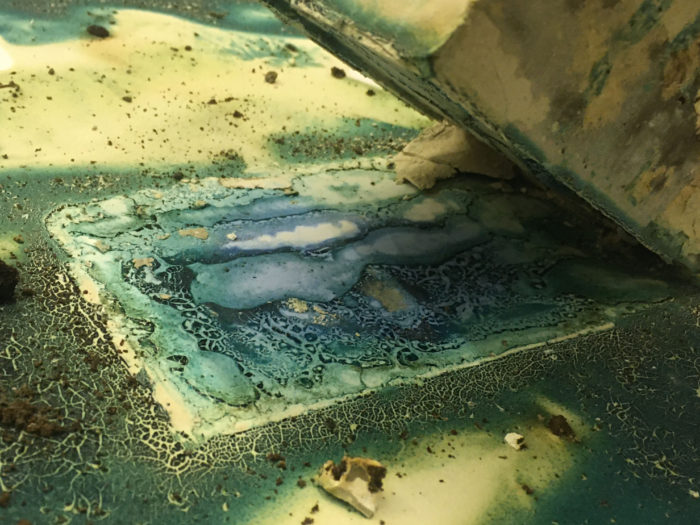Exhibition
16.07 – 20.07.2020
Opening on 16.7; 17:00 – 22:00
Visiting hours: 14:00 – 20:00 and by appointment
If you think you can grasp me, think again is an exhibition by artist Diana Barquero Pérez that deals with the ongoing transformation of a specific region in Southern Costa Rica: Térraba Sierpe. Recognized as a Ramsar site and protected area of great environmental importance since 1995, this wetland plays a major role in carbon sequestration within our collapsing world of climate crisis.The exhibition, as the title suggests, aims to visualize the human pursuit of grasping and conceiving the land and its resources through a purely extractive lens without considering the ensuing complexity of its social and environmental consequences. Through the installation of several conglomerates* where different materials from the area are fixed together, the artist creates a durational, process-based installation, in which conglomerates and water react and transform, altering their materiality and dispersing it through the space. However, Térraba Sierpe is being pressured, shrunk, and transformed by multiple external forces. Banana, palm oil, rice, and pineapple plantations that grow in the wetland’s borders are evidence of an expanding agricultural sector, which is filling land and water with pesticides, fertilizers, and polluted sediments in order to satisfy European and North American demands for these products. This utilization of the land unveils the prevailing capitalist logic in food production systems, which rely on the ‘sacrifice’ of preserved areas, -previously non-agricultural field- to appease the whims of international markets that are geared towards furthering the enrichment of transnational agribusiness.
The exhibition, as the title suggests, aims to visualize the human pursuit of grasping and conceiving the land and its resources through a purely extractive lens without considering the ensuing complexity of its social and environmental consequences. Through the installation of several conglomerates* where different materials from the area are fixed together, the artist creates a durational, process-based installation, in which conglomerates and water react and transform, altering their materiality and dispersing it through the space.
The wetland is a dynamic and changing waterscape. As such, water can transport and carry agricultural pesticides, fertilizers, and polluted sediments from inside the wetland to other environments many kilometers away. (Contaminated) water then becomes the center of events that follow, both outside and inside the protected area. Trying to contain water and nature within a fixed imaginary boundary is a clear example of the limited comprehension, or perhaps carelessness, of those governing the wetland towards both humans and other-than-human entities.
*In geology a conglomerate is a sedimentary rock made of different types of smaller stones fixed by a binder.
Due to Coronavirus restrictions, we can only allow 3 people at once during the visiting hours. Additionally, we will kindly ask for your information at the entrance, which will be kept for four weeks. Thank you for your understanding in advance.

